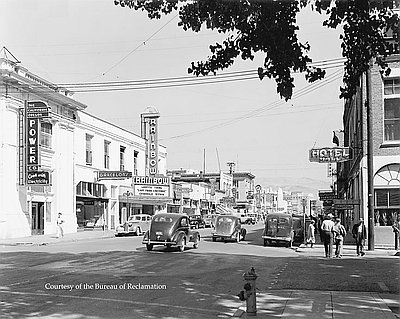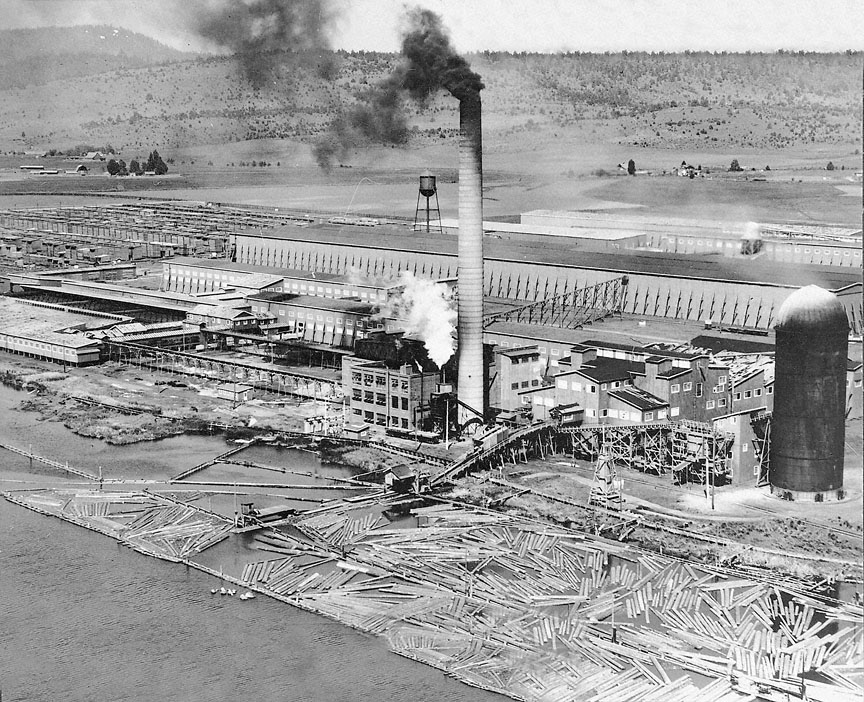- Catalog No. —
- CN 010633
- Date —
- 1941
- Era —
- 1921-1949 (Great Depression and World War II)
- Themes —
- Environment and Natural Resources, Trade, Business, Industry, and the Economy
- Credits —
- Oregon Historical Society
- Regions —
- Southwest
- Author —
- Oregon Journal Collection
Weyerhaeuser Timber Company
At the time of this photo in 1941, Weyerhaeuser Klamath Falls employed approximately 1,200 men and produced 200 million feet of wood products each year. Weyerhaeuser experienced a boom at the start of World War II, and as a result, company officials saw a dramatic change in their product line and workforce. Lumber production was earmarked for the war effort and the box factory changed priorities from fruit and vegetable boxes to airplane crates and cartons for ammunition. The workforce, moreover, saw an influx of women who replaced men recruited by U.S. military.
At the Republican National Convention in 1892, Klamath Falls native Oliver C. Applegate first learned of the Minneapolis Weyerhaeuser family’s interest in Oregon’s rich forests. Shortly after Frederick Weyerhaeuser and his associates purchased 900,000 acres of Washington State timberland in 1900, the group moved into the Klamath Basin and became an important contributor to the area’s economy. The Weyerhaeuser Company purchased the Klamath Lake Railroad and nearby forestlands in 1905, and by 1908, controlled 158,000 acres.
In 1929, the Weyerhaeuser Company opened its Klamath Falls sawmill, and shortly thereafter, they erected a planing mill, dry kilns, and a box factory. Camps in the surrounding forests cut and collected logs, which were then transported by railroad to the sawmill.
Further Reading:
Klamath County Historical Society. The History of Klamath Country, Oregon. Dallas, Texas,1984.
Sensel, Joni. Traditions Through the Trees. Seattle, Wash., 1999.
Weyerhaeuser Company, Weyerhaeuser Company History. Tacoma, Wash., 1974.
Written by Robert Donnelly, © Oregon Historical Society, 2003.
Related Historical Records
-
Making a Timber Industry
In 1905, the business of logging had an entire building to celebrate its development. The Forestry Building was Oregon’s unique contribution to the architecture of world’s fairs. It …
-
Klamath Falls, 1941
In 1860, the Federal Government granted the states swamplands, and by 1867, Oregon opened these lands to settlers. That same year, “swampgrabber” George Nurse secured 160 acres of …

